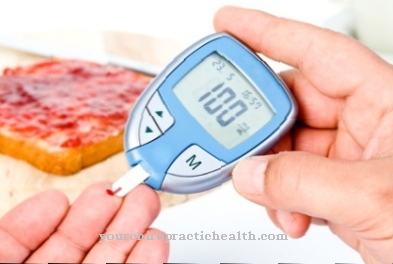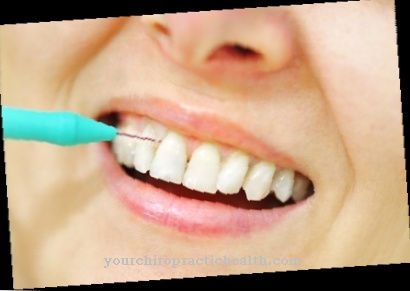Allergic reactions to plasters are common and manifest as itching, reddened skin and pustules. Even inflammation in the affected areas is not uncommon. Children and the elderly are particularly affected. Hypoallergenic patches reduce the risk almost completely. However, despite years of research, no guarantee can be given.
What are hypoallergenic patches?

While common wound dressings also contain allergenic substances, the special hypoallergenic plasters can do without them. Long series of experiments and research into allergenic ingredients were necessary. There is now an extensive range of plasters with little potential for allergies.
As a rule, the carrier material consists of thin viscose fleece and the adhesive consists of polyacrylate. Both substances are characterized by their good skin tolerance. However, 100% security is still not given here. Often consumers are unaware of the allergic reactions of their skin and even hypoallergenic products can therefore cause annoying reactions on the skin.
Older people in particular suffer when they have to wear a plaster for a long time. Their skin is thin and not as well supplied with blood as it is in young people. This also applies to babies and toddlers. You do not have the antibodies of an adult and the skin is very often allergic to the patch. Many allergies have not been researched enough and new ones are added every year. This makes it difficult for the experts to always have a tried-and-tested tool at hand.
Shapes, types & types
Thanks to extensive research, there is now a comprehensive range of hypoallergenic plasters. There are special articles for optimal wound care for both private households and clinics. Many of them are sterile packed and used as a support after operations.
In addition to the products, which are offered in small strips and produced for the care of small wounds, there are plaster strips. They are used when gauze pads are to be fixed on a wound.
People who are permanently restricted in their movements and have to lie in bed need special wound protection. Special pressure ulcer plasters offer good support in this case. A pressure ulcer initially shows up in the form of redness. A lack of care inevitably leads to tissue death. Nursing staff and doctors are particularly in demand here when it comes to the use of hyperallergenic plasters.
An important distinction between the hypoallergenic patches is whether they are waterproof or permeable. Special children's plasters made of hypoallergenic material are printed with colorful pictures and should make it easier for the little ones to wear the wound protection.
Structure & functionality
Both hyper- and hypoallergenic products have roughly the same structure. Depending on the intended use, there is a cushion made of soft material in the middle or on the edge. This can be fixed on the skin with adhesive strips. It is often fortified with an antiseptic liquid or healing ointment. This is not only important for larger wounds. The measure prevents the fleece from joining the weeping wound and the existing crust from being destroyed when the dressing is changed.
Products in the form of filing strips have no padding. They are smooth and completely covered with glue. Special blister plasters for the feet prevent bleeding and prevent blistering. In the case of burns, there is a very high risk of infection in the wound. Special plasters have been developed for this purpose. The skin around the burn center is also very sensitive and the use of hypoallergenic plasters here is normal. In this way, the suffering of those affected is at least a little alleviated. Then it does not matter whether the patient is affected by a patch allergy. Even with the best skin texture, in such crisis situations there is hardly any alternative to hyperallergenic wound material.
Medical & health benefits
The medical benefit of these special plasters is primarily that wound healing proceeds smoothly. If they are used in intensive care to fix a Braunule, they must not show any allergic reactions even after wearing them for days.
In the private sphere, their task is not exclusively to cover small wounds well. People with an artificial anus, for example, have to cope with the patches on a permanent basis. This also applies to patients who wear a prosthesis. In many cases, the residual limb has to be padded and this cushion fixed with a plaster. Even if the person concerned usually does not complain of allergic reactions. It plays a role here that the adhesive plaster stays on the same area of skin for days.
Hypoallergenic plasters are therefore not only indispensable when it comes to the care of patients with allergies. They also serve their purpose where permanent fixation of bandages is necessary.
It is clear, however, that people with chronic diseases can benefit greatly from hypoallergenic patches. Taking care of your wounds is far less painful. It will then be much easier for both nurses and relatives to care for their patients. Mobile people appreciate that these products can also be worn in the water. A dressing change is not necessary after a stay in the bathroom, as the waterproof pad protects the wound from moisture.

























.jpg)


